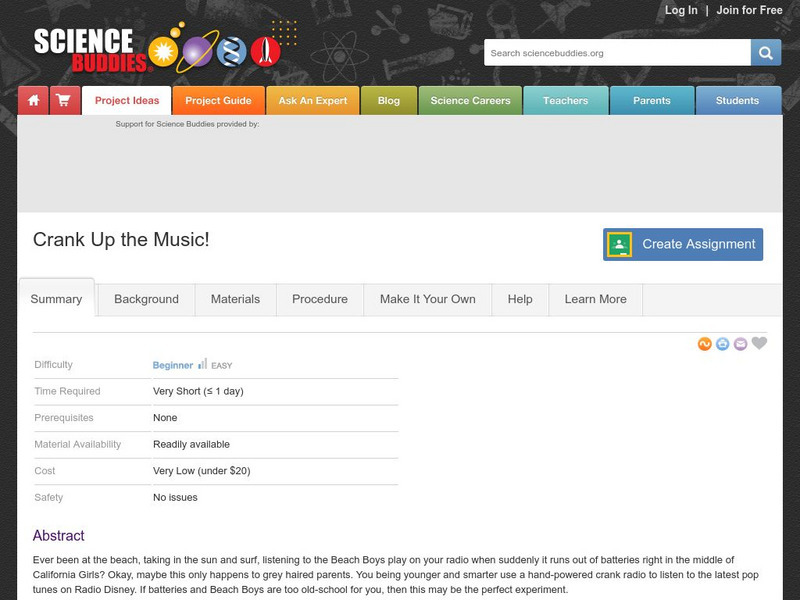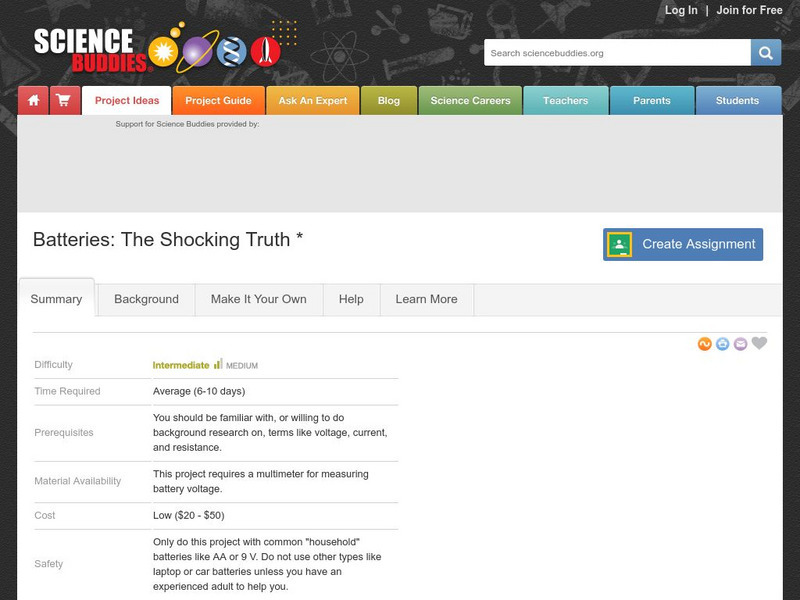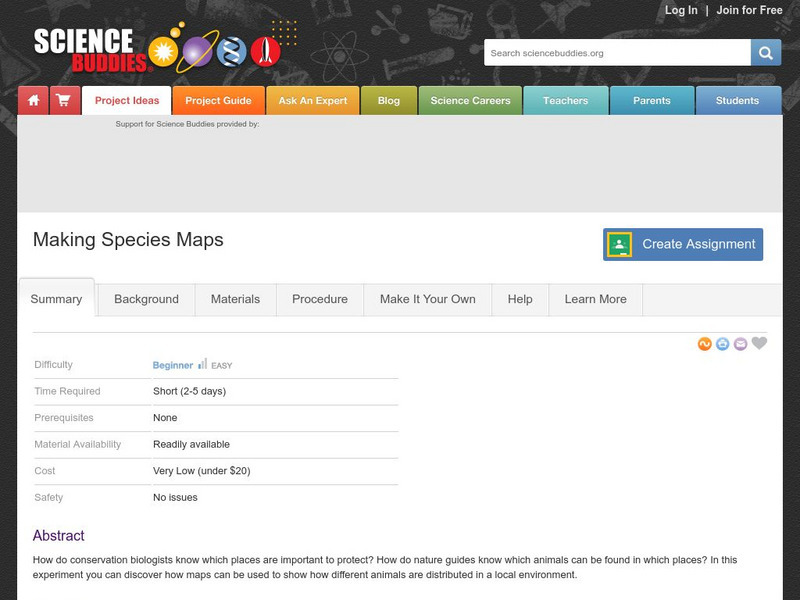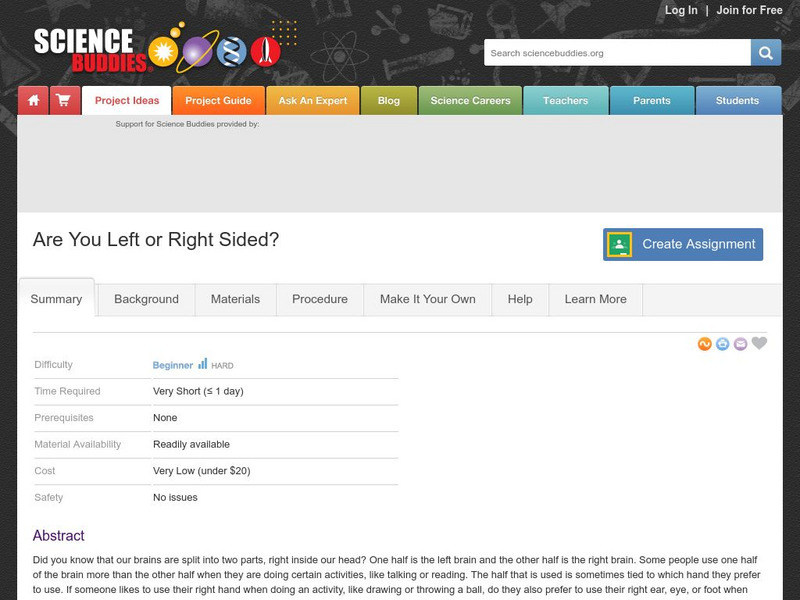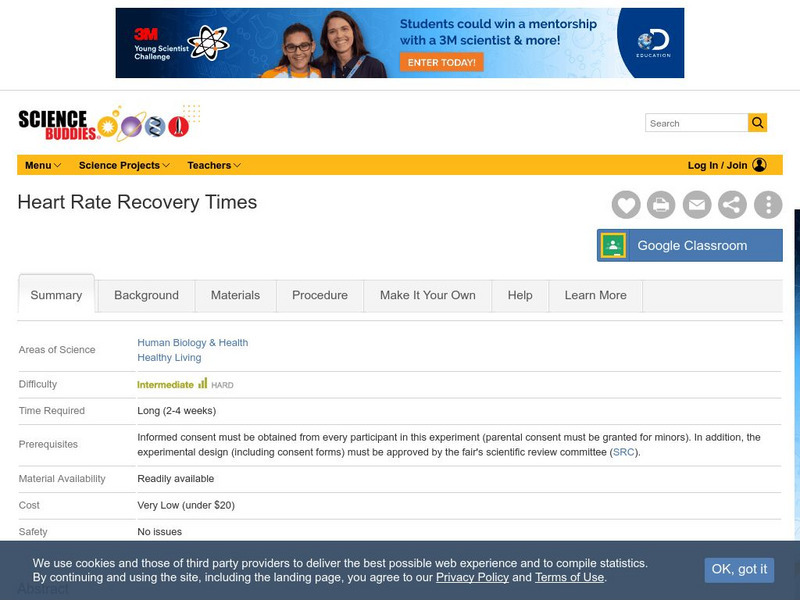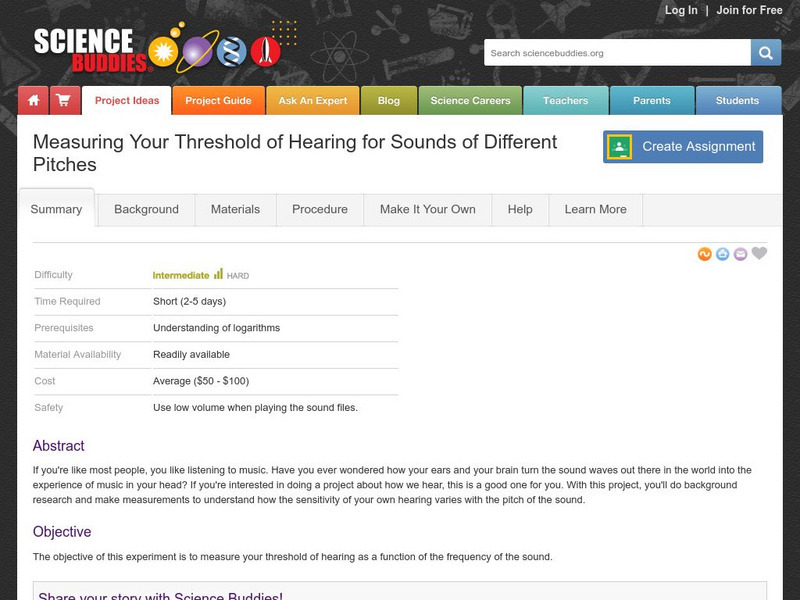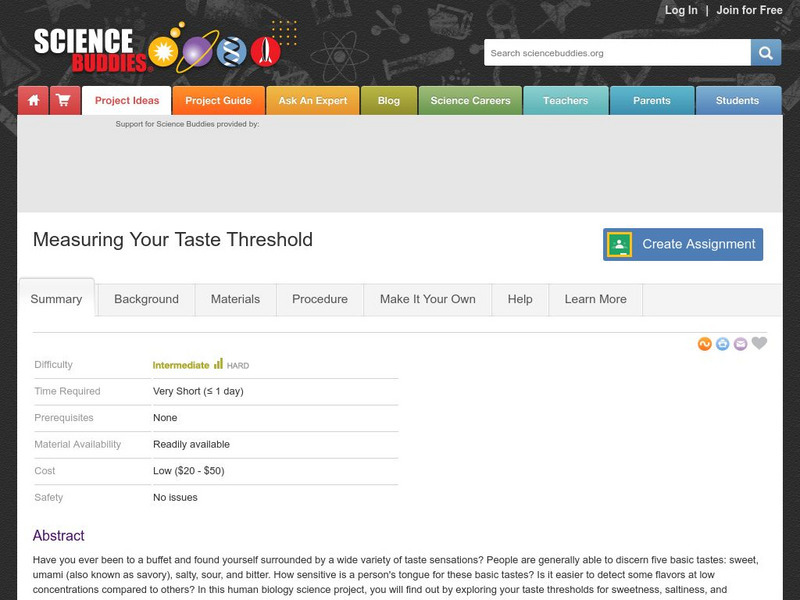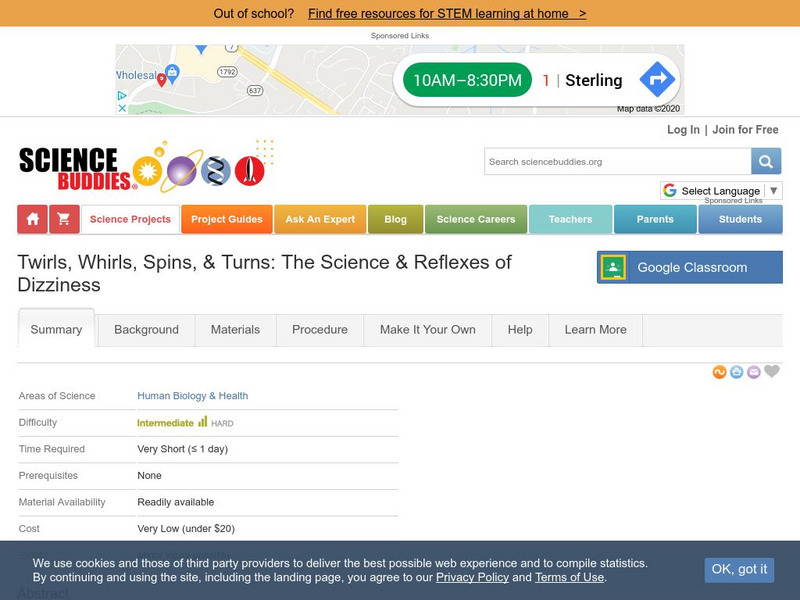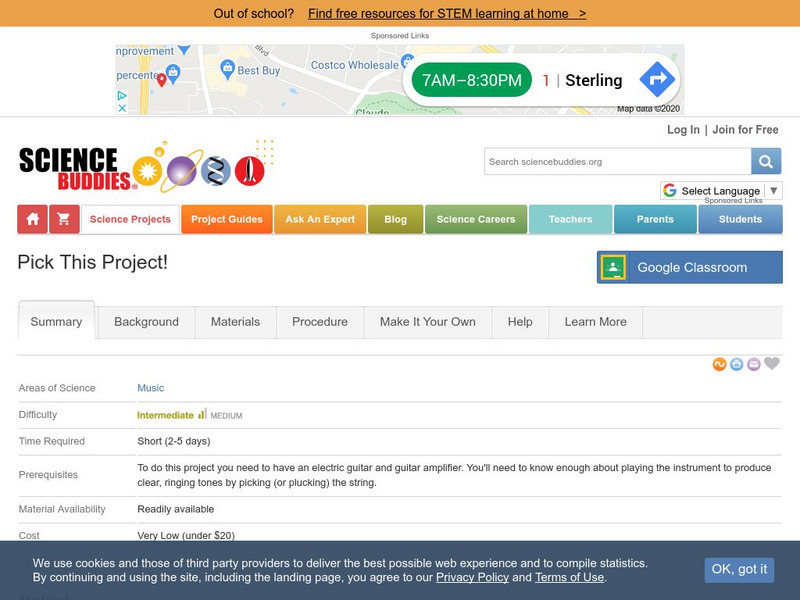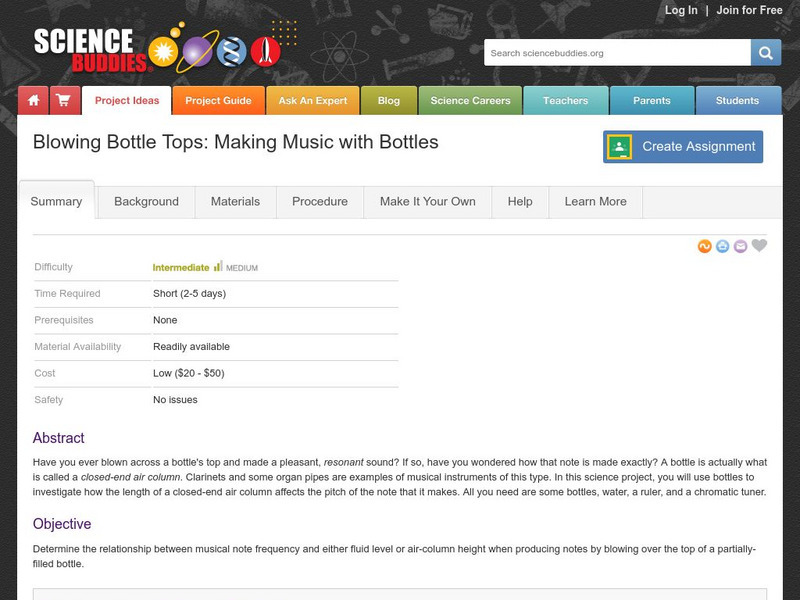Science Buddies
Science Buddies: Crank Up the Music!
Cranked powered appliances and gadgets are becoming more and more prevalent. Items used in America such as flashlights and radios are one example. However, in third world countries, radios have many uses, some important and educational,...
Science Buddies
Science Buddies: Batteries: The Shocking Truth
Here you can find what you need to scientifically assess battery performance. In this exercise (that should take about one week) learn how batteries work, how they wear out and most importantly, how to make valid measurements to assess...
Science Buddies
Science Buddies: Solar Speedway
Solar power is hot these days. Gleaming, black solar panels soak up rays on more and more rooftops of homes and businesses providing a clean, alternative source of heat and electricity. You might guess that different times of the day...
Science Buddies
Science Buddies: A Battery That Makes Cents
Batteries are expensive to purchase in a store, but you can make one your self for exactly 24 cents. In this experiment, you will make your own voltaic pile using pennies and nickels and determine how many coins in a pile will make the...
Science Buddies
Science Buddies: What Electric Bills Can Tell You About Energy Use
This project is a great way to "bring home" the concept of energy use. All you need to get started is a good-sized sample of monthly electric bills from households in your area. Building from this simple beginning, you can ask questions...
Science Buddies
Science Buddies: Now You're Cooking!
Here is a project that uses direct solar power, gathering the sun's rays for heating and sterilizing water or cooking. It's a low-cost technology that seems to have everything going for it. Use this project to find out if it works, and...
Science Buddies
Science Buddies: Using Daphnia to Monitor Water Toxicity
In a bioassay, a living organism serves as a detector for toxins-the same way canaries were used in coal mines to detect invisible toxic gases. In this project, water fleas (Daphnia magna), a freshwater crustacean, are used in a bioassay...
Science Buddies
Science Buddies: Making Species Maps
Conservation biologists know which places are important to protect. How nature guides know which animals can be found in which places, are made possible partly by conservation biology. This experiment allows you to discover how maps can...
Science Buddies
Science Buddies: Deep Knee Bends: Measuring Knee Stress With a Mechanical Model
Prosthetic limbs and artificial joints can help people with disease or injury lead a normal life. Sports medicine or physical therapy is also an area that relates to this experiment. Either way, this project serves as a good match if any...
Science Buddies
Science Buddies: Are You Left or Right Sided?
Our brains are split into two parts, right inside our head. One half is the left brain and the other half is the right brain. Each side of your brain controls different parts of your body and most people are more dominant controlling one...
Science Buddies
Science Buddies: Heart Rate Recovery Times
After exercise, your heart rate increases, this is normal for everyone. However this experiment asks whether the recovery time for a heart's beating rate is faster for people who get regular exercise versus those that do not.
Science Buddies
Science Buddies: Breath of Life: Does Exercise Increase Vital Capacity?
When you take a deep breath, the amount of air you are capable of holding within your lungs, is known as your lung capacity. It is not the same for everyone. This lab asks you to find out if it is possible to increase your lung capacity...
Science Buddies
Science Buddies: The Nose Knows Smell but How About Taste?
As if sniffles and clogged sinuses are bad enough, everything seems to taste bland and flavorless when we are sick. Gather up a few volunteers, hit the kitchen, and try this experiment to find out if there is really truth to the idea...
Science Buddies
Science Buddies: Measuring Your Threshold of Hearing
How your ears and your brain turn the sound waves out there in the world into the experience of music in your head, remains a mystery to many, but yet we all experience and even enjoy sounds and music. If you're interested in doing a...
Science Buddies
Science Buddies: Measuring Your Taste Threshold
Some people are more susceptible to flavors than others. This experiment asks you to test your threshold for the three types of taste our tongues are capable of experiencing: salty, sweet, and sour.
Science Buddies
Science Buddies: Twirls, Whirls, Spins, & Turns: Reflexes & Dizziness
Tilt-A-Whirls, Merry-Go-Rounds, Spinning Tea Cups. Just the thought of these rides is enough to make someone dizzy, or queasy. Learn about spins, turns, and the mixed signals that fire in our brains when the sensation of dizziness takes...
Science Buddies
Science Buddies: Can Garlic Prevent Crown Gall?
Crown gall is a plant disease caused by the soil bacterium Agrobacterium tumefaciens. This project uses tomato plants to investigate whether garlic extract can prevent crown gall infection. Though this is a lengthy experiment, a...
Science Buddies
Science Buddies: Make Your Own Electric Guitar Pickup
If you like playing electric guitar, this could be a cool project for you. In this project you'll wind one or more of your own electric guitar pickups and test them out in an inexpensive electric guitar to understand just how electric...
Science Buddies
Science Buddies: Make Your Own Piezoelectric Pickup for Acoustic Guitar
In this project you'll learn how to make a piezoelectric pickup for acoustic guitar using inexpensive components. You can then connect your acoustic guitar to an amplifier, and record your own music. If you are interested in electronics...
Science Buddies
Science Buddies: Pick This Project!
This lab will help you understand the physics of vibrating strings, and find out why the tone of an electric guitar changes when you switch between the different pickups. If playing guitars is a hobby of yours, this experiment makes an...
Science Buddies
Science Buddies: Blowing Bottletops: Making Music With Glass Bottles
This is a musical project about the resonance of closed-end air columns. Organ pipes, flutes, and brass instruments are examples of musical instruments of this type. In this project, you'll learn how the pitch of the note produced...
Science Buddies
Science Buddies: Singing Wine Glasses
Making a glass sing is not always as easy as it looks. This project explains the science behind the interesting hobby. You will be asked how the amount of fluid within a glass affects its pitch.
Science Buddies
Science Buddies: Guitar Fundamentals: Wavelength, Frequency, & Speed
This is a rockin' project for guitarists with an interest in the physics behind music. If you have ever wondered why the pitch of the note changes when you fret the string, this project will help you understand by applying basic...
Science Buddies
Science Buddies: How to Make a Guitar Sing
This is a great project for musicians interested in the physics of stringed instruments. If you have ever played an acoustic guitar, you may have noticed that picking a single string can make one or more of the other (unpicked) strings...


